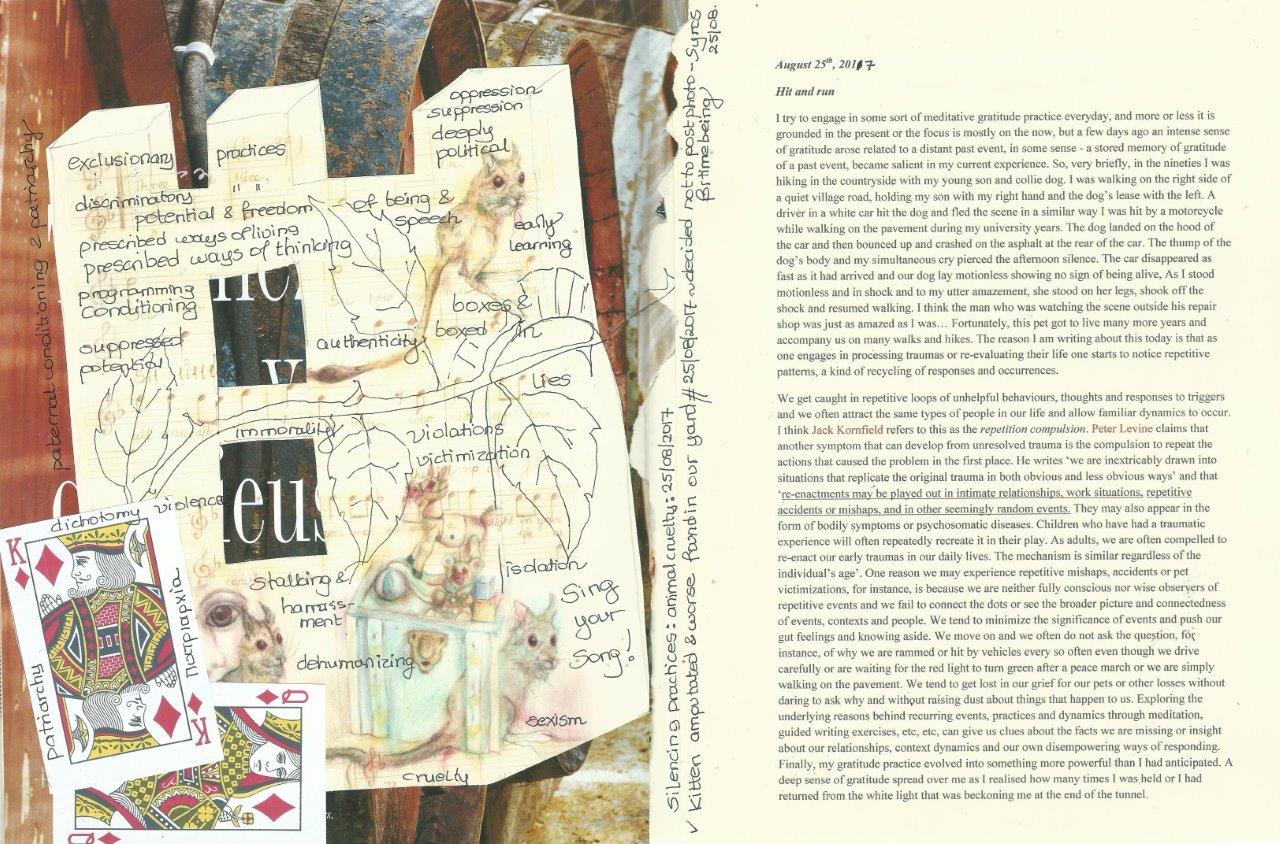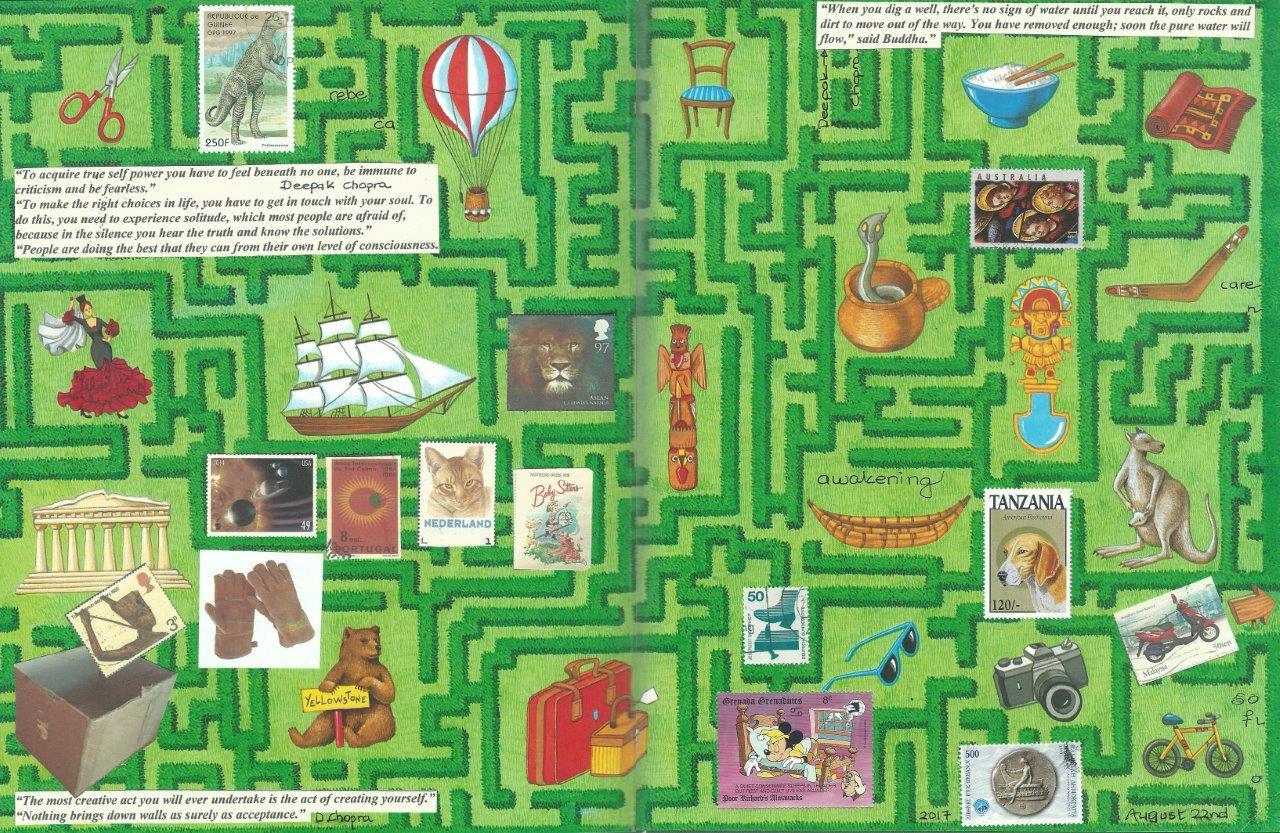Hit and run

I try to engage in some sort of meditative gratitude practice everyday, and more or less it is grounded in the present or the focus is mostly on the now, but a few days ago an intense sense of gratitude arose related to a distant past event, in some sense – a stored memory of gratitude of a past event, became salient in my current experience. So, very briefly, in the nineties I was hiking in the countryside with my young son and collie dog. I was walking on the right side of a quiet village road, holding my son with my right hand and the dog’s lease with the left. A driver in a white car hit the dog and fled the scene in a similar way I was hit by a motorcycle while walking on the pavement during my university years. The dog landed on the hood of the car and then bounced up and crashed on the asphalt at the rear of the car. The thump of the dog’s body and my simultaneous cry pierced the afternoon silence. The car disappeared as fast as it had arrived and our dog lay motionless showing no sign of being alive, As I stood motionless and in shock and to my utter amazement, she stood on her legs, shook off the shock and resumed walking. I think the man who was watching the scene outside his repair shop was just as amazed as I was… Fortunately, this pet got to live many more years and accompany us on many walks and hikes. The reason I am writing about this today is that as one engages in processing traumas or re-evaluating their life one starts to notice repetitive patterns, a kind of recycling of responses and occurrences.
We get caught in repetitive loops of unhelpful behaviours, thoughts and responses to triggers and we often attract the same types of people in our life and allow familiar dynamics to occur. I think Jack Kornfield refers to this as the repetition compulsion. Peter Levine claims that another symptom that can develop from unresolved trauma is the compulsion to repeat the actions that caused the problem in the first place. He writes ‘we are inextricably drawn into situations that replicate the original trauma in both obvious and less obvious ways’ and that ‘re-enactments may be played out in intimate relationships, work situations, repetitive accidents or mishaps, and in other seemingly random events. They may also appear in the form of bodily symptoms or psychosomatic diseases. Children who have had a traumatic experience will often repeatedly recreate it in their play. As adults, we are often compelled to re-enact our early traumas in our daily lives. The mechanism is similar regardless of the individual’s age’. One reason we may experience repetitive mishaps, accidents or pet victimizations, for instance, is because we are neither fully conscious nor wise observers of events and we fail to connect the dots or see the broader picture and connectedness of instances, contexts and people. We tend to minimize the significance of events and push our gut feelings and knowing aside. We move on and we often do not ask the question, for instance, of why we are rammed or hit by vehicles every so often even though we drive carefully or are waiting for the red light to turn green after a peace march or we are simply walking on the pavement. We tend to get lost in our grief for our pets or other losses without daring to ask why and without raising dust about things that happen to us. Exploring the underlying reasons behind recurring events, practices and dynamics through meditation, guided writing exercises, etc, etc, can give us clues about the facts we are missing or insight about our relationships, context dynamics and our own disempowering ways of responding. Finally, my gratitude practice evolved into something more powerful than I had anticipated. A deep sense of gratitude spread over me as I realised how many times I was held or I returned from the white light that was beckoning me at the end of the tunnel.

 Post influenced by the News
Post influenced by the News